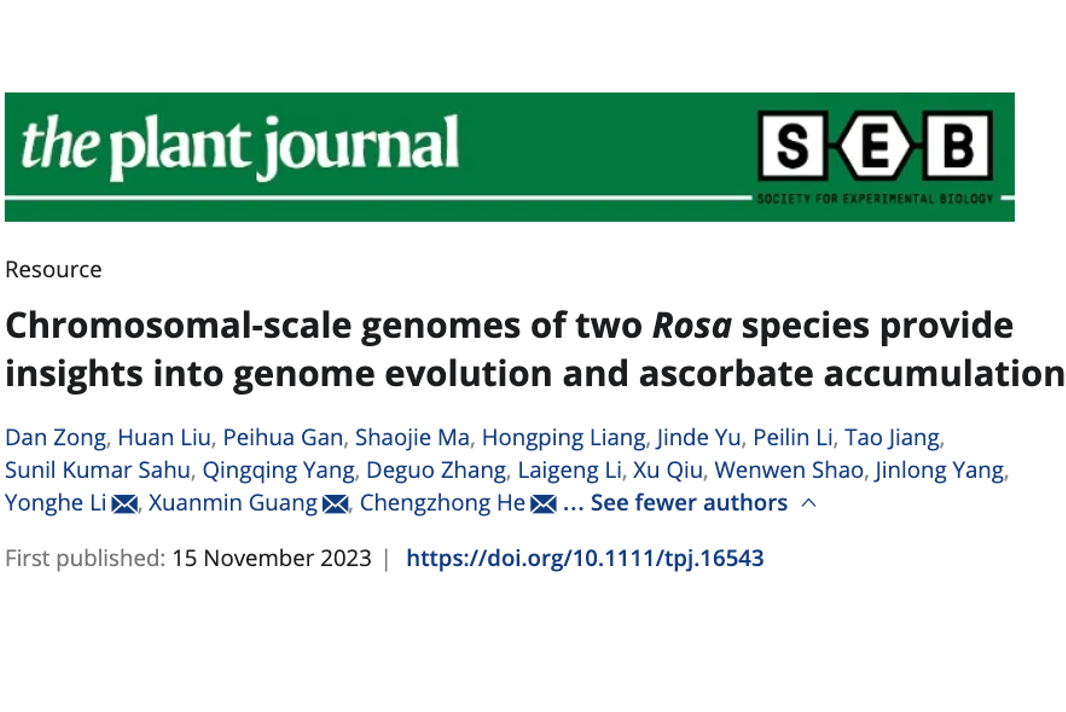This milestone not only holds significant importance for the molecular breeding and improvement of Rosa roxburghii, but also offers valuable applications for the advancement of medical and pharmaceutical research, contributing to future developments in the field of medicine and disease research. The findings were published in The Plant Journal.
Rosa roxburghii, also known as a chestnut rose, is a wild fruit crop belonging to the genus Rosa of the Rosaceae family. This deciduous bush is characterized by its rose-resembling blossoms and spiny fruits, predominantly found in the high-altitude zones of 1,000–1,600 meters within Southwest China's mountainous regions. Historically, this species has been frequently used for medicinal purposes due to the high flavonoid content in its fruits. The Rosa roxburghii boasts one of the highest vitamin C contents among fruits currently known, with an average concentration of about 2,300 milligrams per 100 grams of fresh fruit. This concentration is five times higher than that found in kiwifruit.
 The research, “Chromosomal-scale genomes of two Rosa species provide insights into genome evolution and ascorbate accumulation”, was published in The Plant Journal.
The research, “Chromosomal-scale genomes of two Rosa species provide insights into genome evolution and ascorbate accumulation”, was published in The Plant Journal.
In this study, researchers assembled the genomes of Rosa roxburghii, with a genome size of 504Mb across 7 chromosomes, and Rosa sterilis, featuring a genome size of 981Mb across 14 chromosomes.
This research sheds light on the hybrid origins of Rosa sterilis, derived from Rosa roxburghii and Rosa longicuspis, and offers insights into genome evolution and vitamin C accumulation. To delve into the accumulation mechanism of high Vitamin C content in the fruits of Rosa roxburghii, the research team collected samples at various stages during the critical growth period of Rosa roxburghii fruits, from July to October, for analysis. Based on transcriptomic analysis, two key genes in the Vitamin C biosynthesis pathway were identified in Rosa roxburghii: GME (GDP-D-mannose 3',5'-epimerase)and GGP (GDP-L-galactose phosphorylase). The study found that the expression levels of these two genes were positively correlated with the accumulation of Vitamin C in Rosa roxburghii , especially from July to September. As the expression levels of these two genes increased, the content of Vitamin C in Rosa roxburghii also increased accordingly.
The research reveals that in plants such as Rosa roxburghii, numerous local gene duplications have occurred. These not only strengthened the function of genes and promoted the formation of more metabolic pathways but also specifically enhanced the ability to synthesize secondary metabolites such as flavonoids efficiently. Flavonoids are a key secondary metabolite in plants.
The study also found that there are two genes in Rosa roxburghii related to terpene synthesis. These genes are involved in the production process of disease-resistant compounds within the plant, similar to genes related to immune function in humans. Interestingly, the number of genes in these terpene synthase subfamilies is more abundant in Rosa roxburghii than in other Rosaceae plants, which may provide a genetic-level explanation for the unique disease resistance of Rosa roxburghii.
Dr. Xuemin Guang, co-corresponding author of the article and scientist at BGI-Research, emphasized that the decoding of the Rosa roxburghii genome not only allows us to understand its unique vitamin C accumulation mechanism but also helps us to decipher the formation mechanisms of components such as flavonoids and superoxide dismutase (SOD), which are of great significance for disease treatment and drug development utilization.
Read the research article: https://onlinelibrary.wiley.com/doi/full/10.1111/tpj.16543



